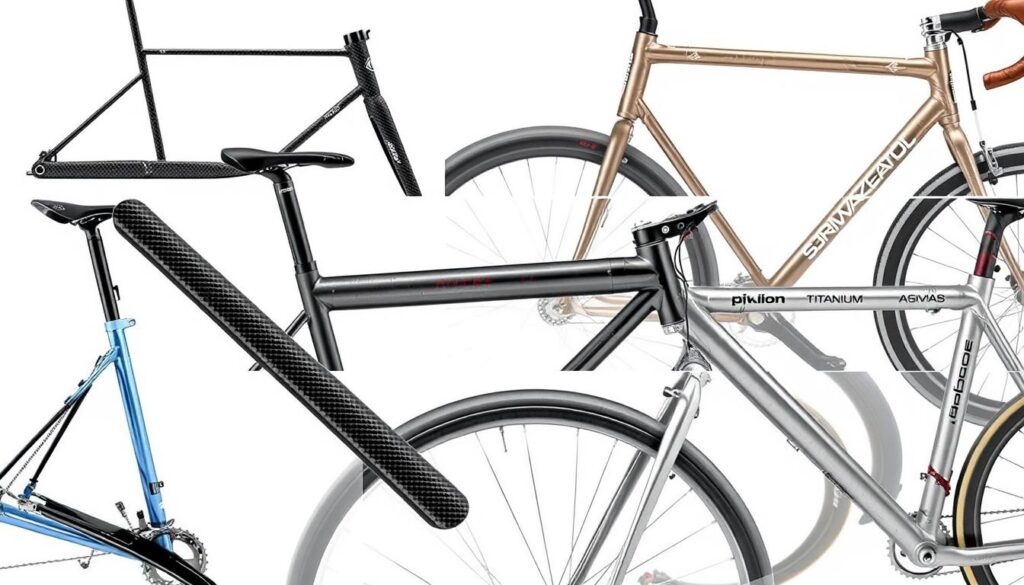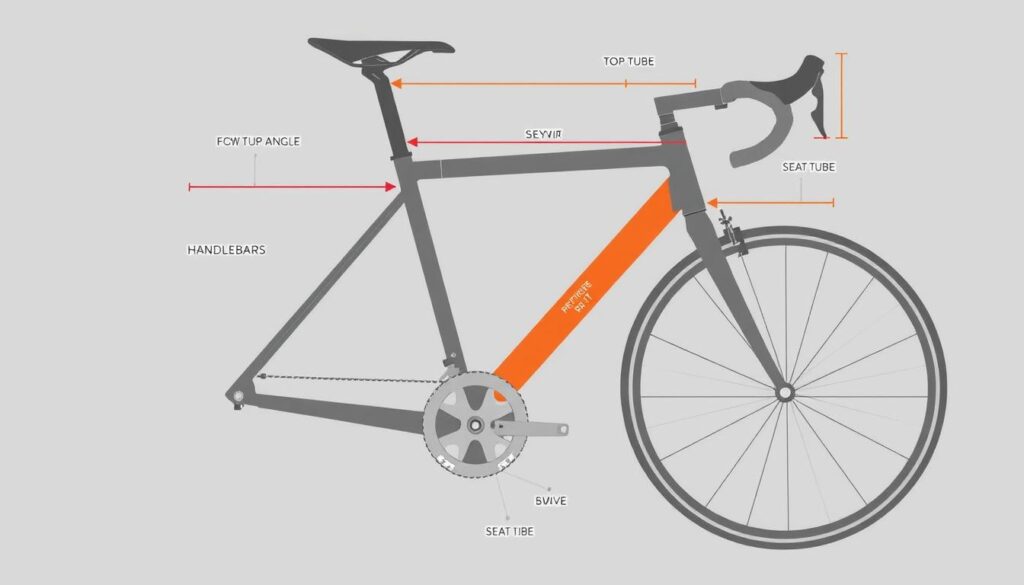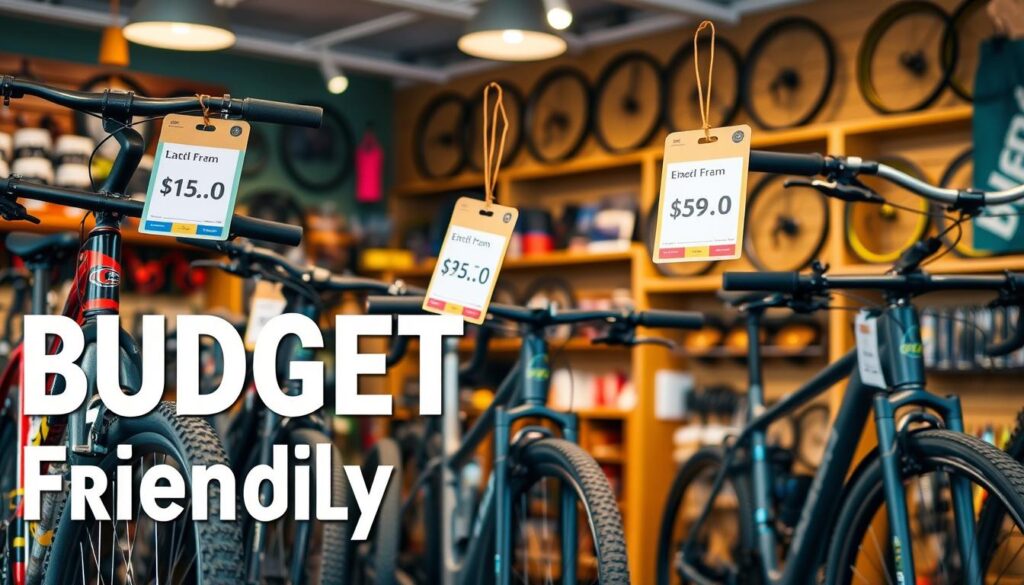How to Choose the Right Bicycle for Your Cycling Needs

Are you an avid cyclist looking for the perfect bike for your next adventure? The wide range of bikes, materials, and parts can make choosing one hard. But don’t worry! This guide will help you find the right bike for your needs and dreams.
Key Takeaways
- Understand your cycling goals to narrow down the ideal bicycle type
- Explore the distinct features and benefits of road bikes, mountain bikes, and hybrid bikes
- Discover how frame materials like carbon, aluminum, and steel impact ride quality
- Learn to prioritize key components like gears, brakes, and bike fit for optimal performance
- Consider your riding terrain and budget to make an informed purchase decision
Understanding Your Cycling Goals
Before you start looking for the perfect bicycle, it’s important to know your main cycling goals. Are you after a bike for fun rides on weekends or for daily commuting? Knowing what you need will help you find the right bike.
Recreational Riding
If you’re into recreational riding, you’ll want a bike that’s comfy and fun. Look at the frame, suspension, and weight for a smooth ride. Bikes for recreational riding have upright seats, wide tires, and focus on stability.
Commuting
If you’re using your bike for commuting, think about efficiency, durability, and practicality. Bikes for commuting should have fenders, racks, and lights. A light bike with smooth tires and a good drivetrain makes commuting better.
Knowing your cycling goals, whether for fun or commuting, helps you choose the right bike. This ensures a great cycling experience, whether for fitness, fun, or getting to work.
Exploring Different Bicycle Types
Choosing the right bicycle is key. There are many types, each for different terrains and activities. Let’s look at road bikes, mountain bikes, and hybrid bikes.
Road Bikes
Road bikes are made for speed on paved roads. They are light and aerodynamic. With drop handlebars and narrow tires, they help riders go fast with less effort.
They’re great for smooth roads and highways. So, they’re perfect for those who love speed and performance.
Mountain Bikes
Mountain bikes are for off-road fun. They have wide tires and suspension for rough terrain. Their design helps riders control and stay stable on hills and trails.
They’re ideal for outdoor lovers who enjoy trails and hills.
Hybrid Bikes
Hybrid bikes mix road and mountain bike features. They offer speed and comfort. With a balanced design, they’re good for both paved and unpaved paths.
They’re perfect for those who want a bike for various rides.
Knowing the differences helps you choose the right bike. Whether you want speed, off-road fun, or versatility, there’s a bike for you.
How to Choose the Right Bicycle for Your Cycling Needs
Choosing the right bicycle is key for a great ride. You need to think about your goals, the terrain, and what you like. These factors help pick the perfect bike for you.
First, figure out why you want a bike. Do you want it for fun rides, daily commutes, or mountain trails? Knowing your goals helps narrow down the best bike type.
- For fun rides, a hybrid or cruiser bike is great. They’re comfy and versatile.
- Commuting? A road bike or one with fenders and racks is better.
- Mountain trails? A mountain bike with strong tires and suspension is best.
Then, think about where you’ll ride. Will it be city streets, trails, or rough paths? The terrain affects the bike’s design. For example, a road bike isn’t ideal for rough paths, but a mountain bike might not be fast on paved roads.
| Terrain | Recommended Bicycle Type |
|---|---|
| Urban/City | Hybrid or Commuter Bike |
| Paved Trails | Road Bike or Hybrid Bike |
| Off-Road | Mountain Bike |
The best bike for you matches your goals, terrain, and preferences. By considering these, you can choose the perfect bike for your adventures.
Frame Materials and Their Benefits
The frame is the heart of a bicycle. The material it’s made of affects its performance, durability, and weight. Knowing the benefits of different materials helps you pick the right bike.
Let’s look at the most common frame materials and their advantages:
- Aluminum – It’s light and doesn’t rust, making it great for city and fun rides. Aluminum frames are quick and efficient but might not be comfy on bumpy paths.
- Carbon Fiber – It’s super light and strong, perfect for serious cyclists. Carbon fiber frames give a smooth ride and help you pedal better, but they cost more.
- Steel – Steel frames are tough and look classic. They’re comfy for long rides and city trips, but they’re heavier than others.
| Frame Material | Lightweight | Durable | Comfortable | Cost |
|---|---|---|---|---|
| Aluminum | ✓ | ✓ | – | $ |
| Carbon Fiber | ✓✓ | ✓ | ✓ | $$$ |
| Steel | – | ✓✓ | ✓✓ | $$ |
Understanding each frame material‘s strengths and weaknesses helps you choose the bike frame material that fits your style and preferences.

“The frame is the heart of a bicycle, and the material it’s made of can make all the difference in the world.”
Bike Components: What to Look For
When you buy a bike, the parts matter a lot. They affect how well the bike works and how safe it is. Let’s look at the important parts to pick the right bike.
Gears and Drivetrain
The gears and drivetrain are key to moving the bike. They help you go up hills and ride on different surfaces. Look for a bike with 18 to 24 speeds for the best ride.
The drivetrain includes the chainring, cassette, and derailleur. It should work smoothly and shift gears well.
Brakes
Brakes are very important for safety. They need to stop the bike well and fast. Think about what brakes you need, like disc or rim brakes.
Disc brakes are great for stopping quickly, especially in wet or muddy conditions. They’re good for mountain and gravel bikes.
| Bike Component | Considerations |
|---|---|
| Gears and Drivetrain | Number of gears (typically 18-24 speeds) Type of drivetrain (e.g., chain, belt) Chainring size and cassette range Derailleur quality and responsiveness |
| Brakes | Brake type (disc or rim brakes) Brake material and durability Brake responsiveness and stopping power |
Choosing the right bike parts is key. It makes sure your bike meets your needs and is safe and fun to ride.
“Quality bike components are the foundation of a smooth, reliable, and enjoyable cycling experience.”
Proper Bike Sizing and Fit
Finding the right bike fit is key for a comfy and efficient ride. It involves considering your height, inseam, and how you ride. Knowing about bike geometry helps match the bike to your needs and style.
Understanding Bike Geometry
Bike geometry is all about the measurements and angles of a bike frame. These details, like the head tube angle and wheelbase, affect how the bike handles and fits you. By grasping bike geometry, you can pick a frame that fits your body and riding style well.
- Head tube angle: This angle influences the bike’s steering responsiveness and stability.
- Seat tube angle: This angle affects the rider’s weight distribution and pedaling efficiency.
- Wheelbase: The distance between the front and rear wheels impacts the bike’s handling and stability.
When sizing a bike, think about your height and inseam. This ensures the frame size is right for you. It helps in transferring power and controlling the bike better while cycling.

“The right bike fit can make all the difference in your cycling experience, whether you’re a seasoned rider or a beginner.”
Understanding bike sizing and bike geometry helps find a bike that fits you perfectly. This leads to a more comfortable, efficient, and fun cycling experience.
Terrain and Cycling Conditions
The terrain and cycling conditions you face can greatly affect your bike choice. Whether you’re riding in the city or off-road, knowing what each place needs is key. This helps you pick the perfect bike for your adventures.
Urban Cycling
Urban cyclists often look for bikes with fenders, racks, and lights. Urban cycling means dealing with traffic, obstacles, and changing road conditions. A bike that’s comfortable and practical is best for city streets.
Off-Road Adventures
Off-road cycling is a different story. You need a mountain bike for trails, rocky paths, and uneven ground. Such bikes have strong suspension and wide tires for stability and control.
“The right bike for the terrain is the key to a safe and enjoyable cycling experience.”
Think about what your cycling environment needs. This way, you can pick the bike that suits your style, whether it’s city streets or trails.
Budget Considerations
When buying a new bicycle, budgeting is key. A good bike is a big investment. It’s important to find a balance between what you need and what you can afford. This way, you can get a bike that meets your cycling goals and fits your budget.
To set a realistic bicycle budget, think about your cycling needs and lifestyle. Are you into serious cycling or just casual rides? Your goals will help decide the type of bike you need and its price.
- Consider the initial purchase price of the bicycle, which can range from a few hundred dollars for an entry-level model to several thousand for a top-of-the-line performance bike.
- Factor in ongoing maintenance and repair costs, such as tune-ups, tire replacements, and component upgrades.
- Don’t forget to budget for essential cycling accessories, like a helmet, lights, and a lock, which can add to the overall cycling budget.
By carefully evaluating your bicycle budget and understanding the long-term costs, you can make a smart choice. With some research and planning, you’ll find the perfect bike. It will give you years of fun and reliable rides.

Essential Cycling Accessories
There are many accessories that can make your cycling better, safer, and more reliable. These include safety gear and tools for bike maintenance. Let’s look at the key accessories you need for a great cycling experience.
Safety Gear
Your safety is crucial when cycling. High-quality cycling accessories like helmets, lights, and reflective gear are essential. A good helmet is a must, offering protection in accidents. Bright lights help you be seen by others, especially at night.
Maintenance Tools
Keeping your bike in good condition is vital for a smooth ride. A set of maintenance tools is necessary for quick fixes and adjustments. This includes a tire patch kit, a multi-tool, and a mini-pump for punctures. Regular maintenance keeps your bike safe and prolongs its life.
| Essential Safety Gear | Indispensable Maintenance Tools |
|---|---|
| Helmet Front and rear lights Reflective gear | Tire patch kit Multi-tool with wrenches Mini-pump |
Choosing the right cycling accessories is crucial for safety and bike care. With the right gear and tools, you can enjoy a worry-free ride. Explore the world on two wheels with confidence.
“A well-maintained bike and the right accessories can transform your cycling experience.”
Conclusion
Finding the right bicycle is a journey of discovery. It starts with knowing your goals and exploring different types of bikes. You should also think about the bike’s materials, parts, and accessories.
The perfect bike matches your riding style, the terrain, and your budget. It lets you enjoy cycling fully.
Whether you love road cycling, mountain biking, or commuting, the right bike makes a big difference. Spend time researching and testing bikes to find the perfect one for you.
Let your love for cycling guide you to the bike that’s just right. It will make your rides more enjoyable and satisfying.
Remember, the journey of cycling is as important as the destination. Enjoy every ride, celebrate your achievements, and let your bike enhance your experience.
With the right bike, you can explore new places, stay fit, and have fun. The possibilities are endless.
FAQ
What are the different types of bicycles to consider?
There are mainly three types of bicycles: road bikes, mountain bikes, and hybrid bikes. Road bikes are fast and efficient on paved roads. Mountain bikes are great for off-road trails. Hybrid bikes are good for both fun rides and light commuting.
How do I choose the right frame material for my bicycle?
The frame material affects the bike’s performance, durability, and weight. You can choose from aluminum, carbon fiber, or steel. Aluminum is light and affordable. Carbon fiber is strong and light. Steel is durable and classic. Pick based on your goals, terrain, and budget.
What key components should I look for when choosing a bicycle?
Look at the gears and drivetrain for climbing and speed. The braking system is key for safe stops. Also, consider suspension, wheel size, and tire width based on the bike type and use.
How do I ensure I get the right bike size and fit?
The right bike size depends on your height, inseam, and riding style. Bike geometry like reach, stack, and head tube angle also matter. They affect comfort and handling.
What terrain and cycling conditions should I consider when choosing a bicycle?
Think about the terrain and conditions you’ll ride in. For city commuting, look for bikes with fenders, racks, and lights. For off-road, choose a mountain bike with strong suspension and wide tires.
How do I set a realistic budget for my new bicycle?
Set a budget that includes the bike’s cost and ongoing expenses like maintenance and upgrades. Finding a balance between quality and price helps you get a bike that meets your needs and budget.
What essential cycling accessories should I consider?
Don’t forget safety gear like helmets, lights, and reflectors. Also, get maintenance tools like a bike pump, tool kit, and bike lock. These accessories improve your ride, safety, and bike care.


